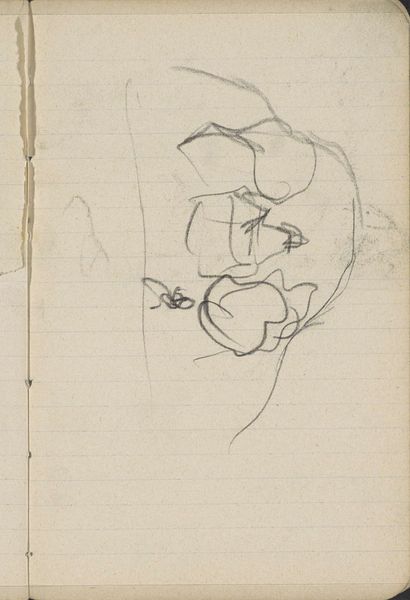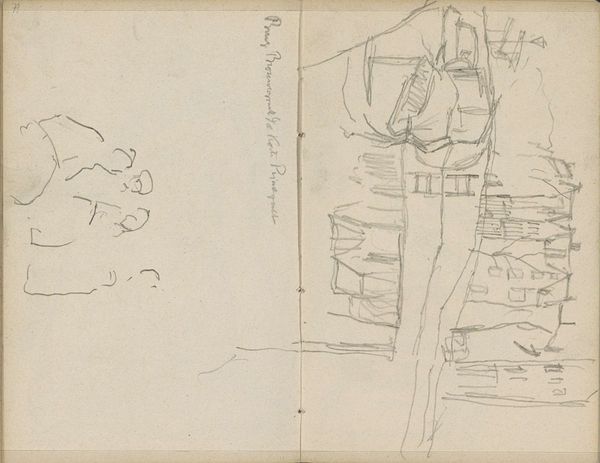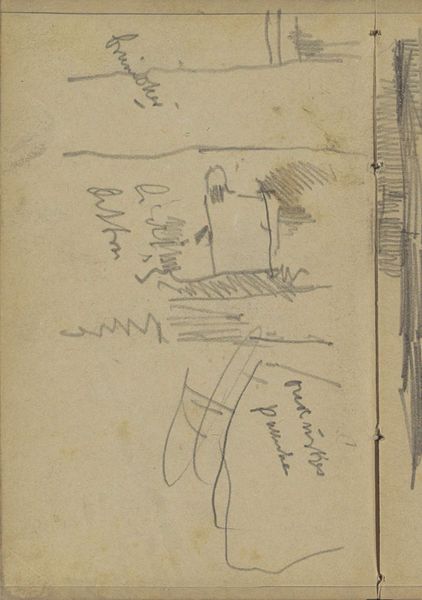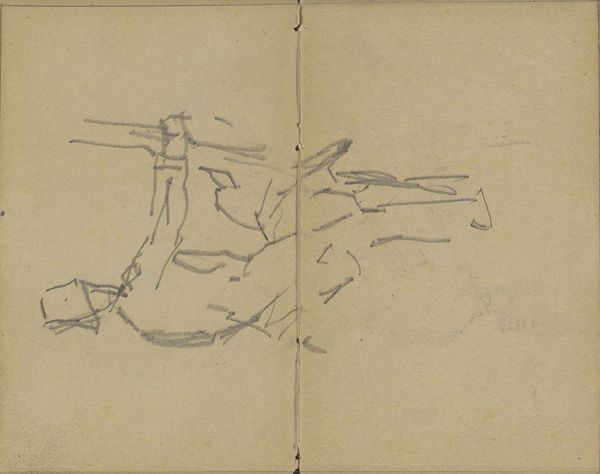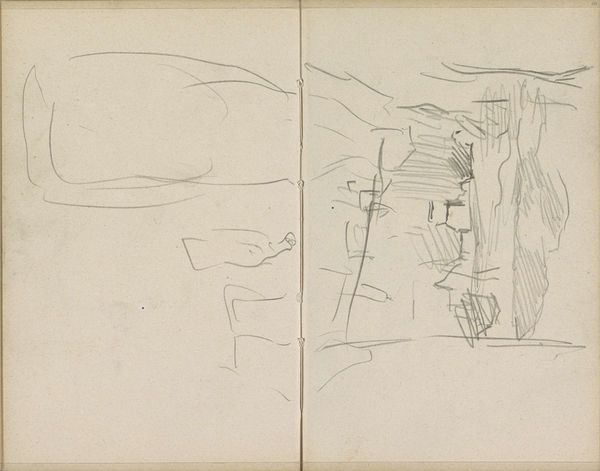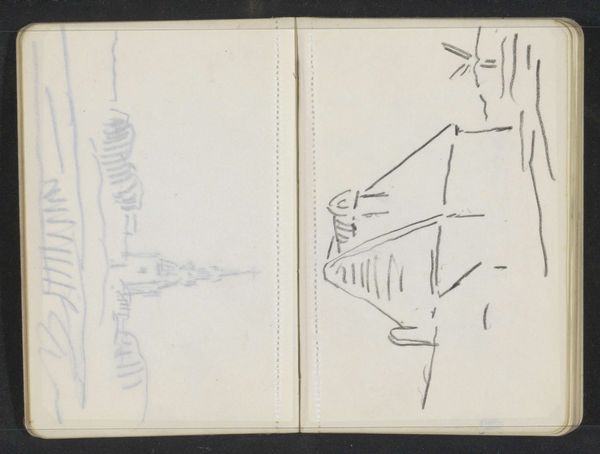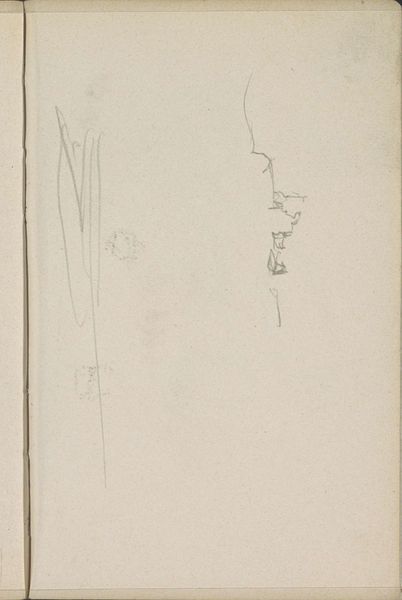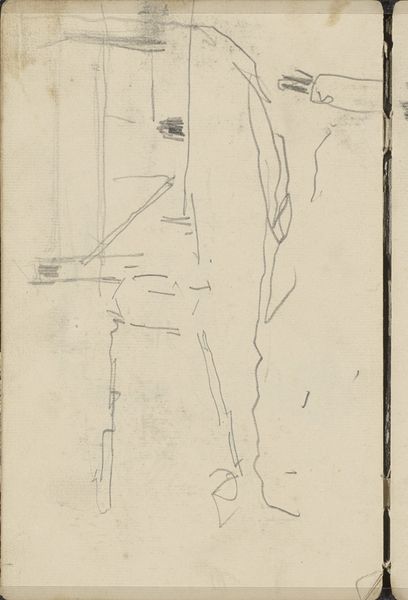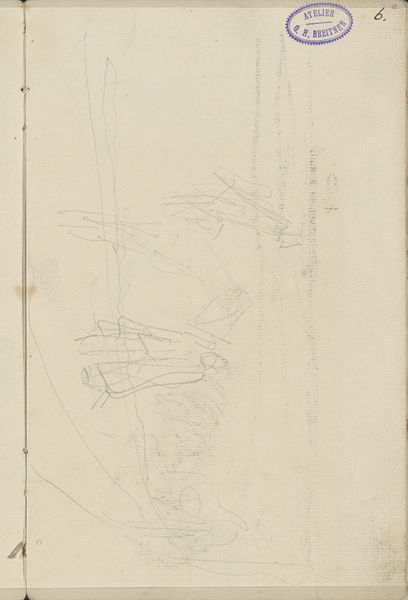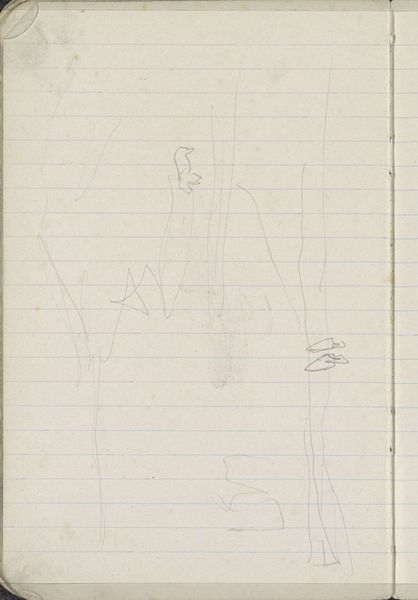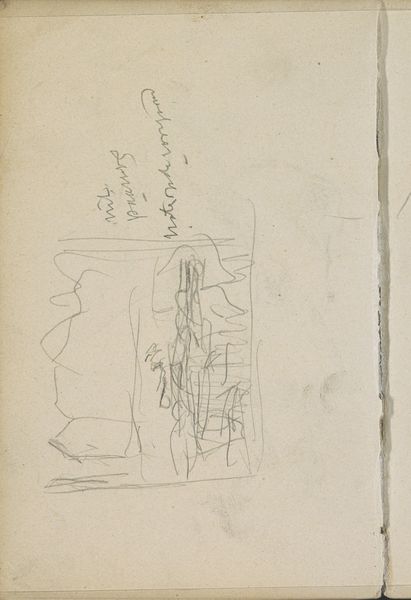
Dansende dienstmeiden bij de Haarlemmerstraat in Amsterdam c. 1903
0:00
0:00
Copyright: Rijks Museum: Open Domain
Editor: This is "Dancing Maids near Haarlemmerstraat in Amsterdam," a pencil drawing by George Hendrik Breitner, circa 1903. It looks like a sketch in a notebook. It's minimal, almost ephemeral, and feels like a fleeting observation. How do you interpret this work? Curator: This sketch provides an intimate glimpse into Breitner's artistic process and, more importantly, into the lives of working-class women in Amsterdam at the turn of the century. We need to consider the power dynamics inherent in the artist-model relationship. Breitner, a man of considerable social standing, capturing these women, likely domestic servants, at work, or perhaps during a rare moment of leisure. What does it mean to represent a marginalized group without delving into the realities of their labour and socio-economic status? Editor: That's a good point, I didn't consider that at all. It seems like the drawing focuses more on their movement than on the details of their faces, clothing or what kind of work they were doing. Curator: Exactly! The sketch privileges a certain kind of aesthetic experience. It's less interested in their individual stories and more invested in capturing a moment of fleeting beauty, thus possibly perpetuating a romanticized and detached view of their lives. How do you think we can bridge that distance between the image and the lives of the women represented? Editor: By researching the historical context, finding primary sources, oral histories maybe. Thinking about their experience rather than only about how beautiful it looks as a drawing. Curator: Precisely! By doing this, we start to unpack not just what Breitner saw, but also what he chose to represent, and more crucially, what he omitted, ultimately providing a more nuanced understanding of both the artwork and the social realities it hints at. Editor: I'll definitely look into that! Thanks! Curator: It’s a necessary shift—towards intersectional narratives that acknowledge the complexities of identity, labor, and representation within art history.
Comments
No comments
Be the first to comment and join the conversation on the ultimate creative platform.
